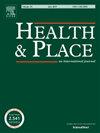Community insights into societal causes of and solutions for schistosomiasis transmission in Lake Albert fishing villages: A participatory approach
IF 4.1
2区 医学
Q1 PUBLIC, ENVIRONMENTAL & OCCUPATIONAL HEALTH
引用次数: 0
Abstract
Introduction
Schistosomiasis presents a significant public health concern with debilitating effects on millions of people, mostly in sub-Saharan Africa. In Uganda, despite intervention via mass drug administration (MDA) of praziquantel to combat the disease, prevalence remains alarmingly high within hotspots such as Lake Albert. Integrated control methods, including water-contact reducing behavioural change, have therefore been advocated. Despite the potential benefits of community involvement in the design of schistosomiasis behavioural change interventions, this approach has not been implemented in these Ugandan hotspots. Utilising community involvement, this study explored societal resource-based causes of lake-derived schistosomiasis transmission in hotspot communities of Hoima, western Uganda, how changing levels in these resources and access to them are altering infection-risk behaviour, and locally devised solutions for reducing infection-risk behaviours.
Materials and methods
A bottom-up participatory qualitative research design was employed. Purposive sampling was utilised to select 84 community advisory board (CAB) members to participate in focus group discussion sessions and participatory workshops. The CAB members comprised of fishermen, housewives, snail harvesters, village health teams, female and male youths, and community leaders. The data collected was analysed thematic-wise.
Results
The importance of the lake includes fish for both consumption and sale, water mainly for domestic use, papyrus for a variety of purposes, including roofing, sleeping mats, and mattresses and other resources such as oil, clay, sand, and salt. Community members reported that local conflicts, unfavourable and restrictive government policies, floods, migration, and instability have changed lake-derived resource levels. Recommendations for minimising contact with the lake suggested by participants were the provision of alternative water sources, promoting education, literacy and vocational skills, financial support, community empowerment and joint collaborative approaches.
Conclusions and recommendations
Despite challenges, Lake Albert provides a significant source of livelihood to communities. Providing alternative water sources and empowering local communities through the provision of alternative livelihood strategies is critical to reducing contact with the lake. A bottom-up participatory approach to community engagement facilitates community understanding of schistosomiasis problems and allows them to devise sustainable solutions to the problem.
社区对阿尔伯特湖渔村血吸虫病传播的社会原因和解决办法的见解:参与式方法。
血吸虫病是一个重大的公共卫生问题,对数百万人造成衰弱性影响,主要发生在撒哈拉以南非洲。在乌干达,尽管通过吡喹酮的大规模药物管理(MDA)进行干预以防治该病,但在艾伯特湖等热点地区,患病率仍然高得惊人。因此,人们提倡综合控制方法,包括与水接触减少行为改变。尽管社区参与血吸虫病行为改变干预措施的设计具有潜在的好处,但这种方法尚未在乌干达这些热点地区实施。利用社区参与,本研究探讨了乌干达西部Hoima热点社区湖源性血吸虫病传播的社会资源基础原因,这些资源水平和获取途径的变化如何改变感染风险行为,以及当地设计的减少感染风险行为的解决方案。材料与方法:采用自下而上的参与式质性研究设计。采用有目的抽样的方法,选取84名社区谘询委员会(CAB)成员参加焦点小组讨论和参与性工作坊。合作社成员包括渔民、家庭主妇、蜗牛收割者、村卫生队、男女青年和社区领袖。对收集到的数据进行了专题分析。结果:该湖的重要性包括消费和销售的鱼,主要用于家庭使用的水,各种用途的纸莎草,包括屋顶,睡垫和床垫以及其他资源,如油,粘土,沙子和盐。社区成员报告说,当地冲突、不利和限制性的政府政策、洪水、移民和不稳定已经改变了湖泊资源水平。与会者提出的关于尽量减少与湖泊接触的建议包括提供替代水源、促进教育、扫盲和职业技能、财政支助、社区赋权和联合合作办法。结论和建议:尽管面临挑战,阿尔伯特湖为社区提供了重要的生计来源。提供替代水源并通过提供替代生计战略赋予当地社区权力,对于减少与湖泊的接触至关重要。自下而上的社区参与方法促进了社区对血吸虫病问题的了解,并使他们能够制定可持续的解决问题的办法。
本文章由计算机程序翻译,如有差异,请以英文原文为准。
求助全文
约1分钟内获得全文
求助全文
来源期刊

Health & Place
PUBLIC, ENVIRONMENTAL & OCCUPATIONAL HEALTH-
CiteScore
7.70
自引率
6.20%
发文量
176
审稿时长
29 days
期刊介绍:
he journal is an interdisciplinary journal dedicated to the study of all aspects of health and health care in which place or location matters.
 求助内容:
求助内容: 应助结果提醒方式:
应助结果提醒方式:


